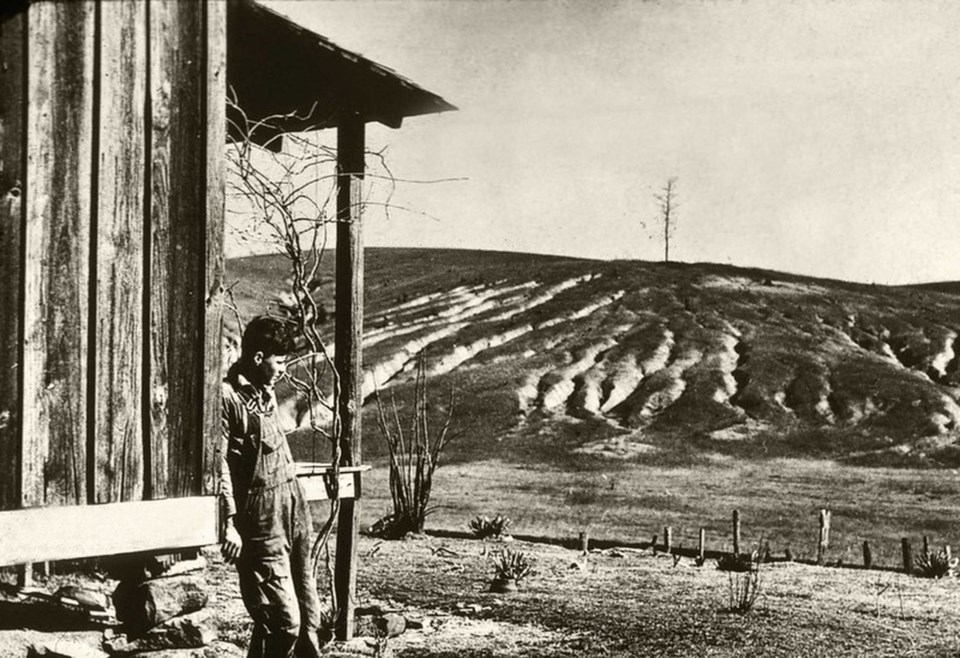Farmers in B.C.’s Kootenay region will be dealing with drier fields in 50 years. They’re not alone.
Environment Canada predicts the upcoming decades will transform Canada’s climate, forcing farmers to re-evaluate everything from which seeds to buy to which pastures their livestock graze. That’s a huge challenge for farmers with no time to pore over scientific studies and models charting how the climate crisis will transform their land.
It's a challenge advocates say could be addressed with a glance to the past.
In the 1930s, drought, economic depression, and ill-suited farming practices forced thousands off their farms while dust storms blackened the skies. The crisis led the federal government to create the Prairie Farm Rehabilitation Administration (PFRA), an institution that brought together agricultural researchers, engineers, and extension (community outreach) staff to help farmers use their land sustainably — a sort of Medicare for farms.
“It became a body of expertise and understanding of grassland ecosystems, and grazing relationships, and biodiversity. In more recent years they were really looking into how the pasture land sequestered carbon,” said Cathy Holtslander, director of research and policy at the National Farmers Union.
The PFRA endured for the next 77 years, helping Prairie farmers deal with water supply issues, develop drought and flood resilience plans, diversify their crops, and farm sustainably. Researchers with the organization also restored failed farmland into ecologically vibrant grasslands and offered free tree seedlings to farmers who supported native pollinators, slowed wind erosion, and captured carbon.
“These were (among the) federal government's positive contributions to the public good that people really valued. It was a living, concrete argument for public interest investment in people's lives,” she said.
The organization was dismantled by Stephen Harper’s Conservative government in 2013.
“(Harper government members were) market fundamentalists where the only thing that mattered was profit, and (who viewed) anything that isn't making money for a business as not legitimate,” Holtslander said.
“They had to take away the good example.”
An example that offers useful lessons for today.
“If we imagine the transition to a climate-compatible, low (greenhouse gas) emissions farming sector, a bunch of things need to happen,” said Darrin Qualman, a farmer and the director of climate crisis and policy at the National Farmers Union.
Those things include helping farmers access independent agronomists and agrologists (independent agricultural experts) who can help them with everything from replacing greenhouse gas-intensive artificial fertilizers with low-emissions alternatives to sharing cutting-edge agricultural research, developing sustainable irrigation systems, and restoring grassland pastures.
“(We need) a proactive agency that would manage and assist in the (agricultural) transition we need to make between now and 2050,” he said.
Such an agency doesn’t exist. Farmers rely on a patchwork of extension services offered by everyone from scholars working on a specific project to product marketing boards to seed and fertilizer companies whose financial interests might not align with low-input, climate-friendly agricultural practices.
“It’s inefficient, like reinventing the wheel,” said Rachael Roussain, co-ordinator at the Kootenay and Boundary Farm Advisors, an agricultural extension program in southeast B.C.’s rugged Kootenay and Boundary regions.
“A lot of farmers are trying to adapt (to climate change). They’re increasing their soil moisture-holding capabilities (which helps build resilience against drought). They’re preparing for more variable weather events. But when they can share that with a greater circle of people, they grow and learn faster — and it livens spirits, which is so important in agriculture,” she said.
For instance, her organization supports farmers in parts of B.C. that are far removed from universities, provincial or federal agricultural experts, and other farmers.
That makes it difficult for the regions' busy farmers to keep up with research and farm trials taking place outside their direct community, or for agricultural researchers to connect with people on the front lines of climate change. (“I don’t think people really understand how busy farmers are,” Roussain quipped.)
The lack of co-ordination results in research projects being unnecessarily repeated and the loss of knowledge-sharing opportunities between people across Canada’s agricultural sector, she explained.
And so far, there have been no indications the federal government intends to create an institution that could lead that co-ordination.
“We recognize farmers, foresters, and ranchers as key partners in the fight against climate change, and we will support their efforts to reduce emissions and build resilience,” said Agriculture and Agri-food Canada in an emailed statement.
That support has included pledging to create a new Canada Water Agency, funding provincial-federal grants to help farmers adapt to climate change, and supporting agricultural research — not co-ordinating efforts within the agricultural sector, Canada’s sixth-largest greenhouse gas emitter, to reduce emissions and adapt to a rapidly changing climate.
These projects are appreciated, Qualman said, but the need remains for an institution that has staff in the field working with farmers as they adapt.
“The bottom line is we need a lot of help with the big project of maintaining yield and food supplies while cutting (fertilizer and pesticide) use and emissions,” he said.

